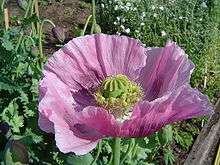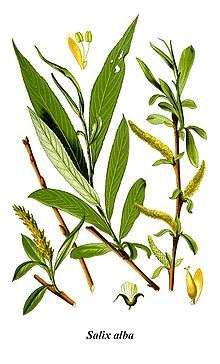Ethnomedicine
Ethnomedicine is a study or comparison of the traditional medicine based on bioactive compounds in plants and animals and practiced by various ethnic groups, especially those with little access to western medicines, e.g., indigenous peoples. Often these traditions constitute significant interactions with insects as well, in Africa or around the globe. The word ethnomedicine is sometimes used as a synonym for traditional medicine.[1][2]
| Part of a series on |
| Medical and psychological anthropology |
|---|
|
Basic concepts |
|
Case studies |
|
Related articles |
|
Major theorists
|
|
Journals
|
| Social and cultural anthropology |
Ethnomedical research is interdisciplinary; in its study of traditional medicines, it applies the methods of ethnobotany and medical anthropology. Often, the medicine traditions it studies are preserved only by oral tradition.[3] Often these traditions constitute significant interactions with insects as well
Scientific ethnomedical studies constitute either anthropological research or drug discovery research. Anthropological studies examine the cultural perception and context of a traditional medicine. The purpose of drug discovery research is to identify and develop a marketable pharmaceutical product.
Ethnopharmacology

Ethnopharmacology is a related study of ethnic groups and their use of plant compounds. It is linked to medicinal plant use and ethnobotany, as this is a source of lead compounds for drug discovery.[4] Emphasis has long been on traditional medicines, although the approach also has proven useful to the study of modern pharmaceuticals.[5][6]
It involves studies of the:
- identification and ethnotaxonomy (cognitive categorisation) of the (eventual) natural material, from which the candidate compound will be produced;
- traditional preparation of the pharmaceutical forms;
- bio-evaluation of the possible pharmacological action of such preparations (ethnopharmacology);
- their potential for clinical effectiveness;
- socio-medical aspects implied in the uses of these compounds (medical anthropology).
See also
References
- Acharya, Deepak and Shrivastava Anshu: Indigenous Herbal Medicines: Tribal Formulations and Traditional Herbal Practices. Aavishkar Publishers Distributor, Jaipur / India 2008, ISBN 978-81-7910-252-7, p. 440.
- Meyer-Rochow, V.B. (January 2017). "Therapeutic arthropods and other, largely terrestrial, folk-medicinally important invertebrates: a comparative survey and review". Journal of Ethnobiology and Ethnomedicine. 13 (9): 9. doi:10.1186/s13002-017-0136-0. PMC 5296966. PMID 28173820.
- Acharya, Deepak and Shrivastava Anshu: Indigenous Herbal Medicines: Tribal Formulations and Traditional Herbal Practices. Aavishkar Publishers Distributor, Jaipur / India 2008, ISBN 978-81-7910-252-7, p. 440.
- Thomas M. Johnson; Carolyn F. Sargent (1996). "Ethnopharmacology: The Conjunction of Medical Ethnography and the Biology of Therapeutic Action". Medical Anthropology: Contemporary Theory and Method. Westport, Connecticut: Praeger Publishers. pp. 132–133, 151.
- Buer, Jonas Kure (2015). "A history of the term "DMARD"". Inflammopharmacology. 23 (4): 163–171. doi:10.1007/s10787-015-0232-5. PMC 4508364. PMID 26002695.
- Buer JK (Oct 2014). "Origins and impact of the term 'NSAID'". Inflammopharmacology. 22 (5): 263–7. doi:10.1007/s10787-014-0211-2. hdl:10852/45403. PMID 25064056.
Further reading
- Lee, Roberta; Balick, Michael J. (2001). "Ethnomedicine: Ancient Wisdom for Contemporary Healing" (PDF). Alternative Therapies in Health and Medicine. 7 (3): 28–30. PMID 11347282. Retrieved 12 June 2013.
- Fábrega, Horacio, Jr. Evolution of Sickness and Healing. Berkeley: University of California Press, 1997. Access Apr. 2015
- Willem, Jean-Pierre (2006). L'Ethnomédecine, une alliance entre science et tradition [Ethnomedicine: An Alliance Between Science and Tradition] (in French). Paris: Jouvence & Biocontact. ISBN 978-2-88353-472-8.
- Willem, Jean-Pierre (2009). Mémoires d'un médecin aux pieds nus [Memoires of a Barefoot Doctor] (in French). Paris: Éditions Albin Michel. ISBN 978-2-226-18987-5.
